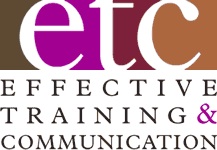This article is third in a series on audience-centric presentations.
Another mission-critical component for creating audience-centric presentations is Audience Analysis. The more you know about your audience, the easier it will be for you to craft a focused message for them and achieve your intended outcomes. Let’s briefly highlight the two components of Audience Analysis – Demographics and Psychographics.
Demographics – numbers about people – are generally easy to identify or assume. How large is your audience? What’s the age range and largest segment? What about gender? If a diverse group, where do they work and what do they do? If an in-house group, what’s their range in tenure, job level, education level, earnings and what are the largest segments for each category? What departments do they work in and in what locations? In either case, who is the target audience within the whole group?
What’s their ethnic or racial make up and what bearing might this have on your presentation? Are any audience members foreign nationals where language might be a factor? Does anyone speak English – actually American – as a second language?
All these objective demographic factors can impact what and how you communicate verbally and visually and should be easy to tell or determine. But, the Psychographics of the audience often have more influence on your presentation’s outcomes. Those factors are very subjective and much more difficult to assess.
What mindsets, biases or strong feelings does the audience have about your message, you as the messenger or the organization the messenger represents? How much pain does the audience feel regarding the topic? What are their values, needs, and political and financial influences? How might these factors impact your message?
What is the audience’s preferred method and style of communication? To be audience-centric, you must communicate with the audience in the way the want you to communicate with them. Can you define an approach and style that is likely to work well with their variety of preferences?
Can you identify potential questions or objections the audience might have? If so, what’s your strategy for responding to them?
Given the difficulty of determining audience Psychographics, invest the time do your homework. Can you talk to others who know this group better than you? What about this group’s past performance or reactions might suggest their attitudes? Can you talk with select members of the audience up front to attempt to gauge their feelings? Can you even ask the audience some opening questions during your introduction to better connect with them?
After your presentation, be sure to evaluate the initial psychographic assumptions you made in light of your results. Knowing what you know now, what would you do different or better next time?
So, to create a successful Audience-Centric presentation, thoroughly analyze your audience. Identify and consider the impact of all relevant Demographic factors. Spend the time needed to assess the subjective Psychographic factors and their influence on your results. The better you know your audience, the better your results.


4 Comments
Liked the idea of connecting with the audience at the outset, makes sense. I plan on using the appraoch.
Thanks!
Thanks Doug, glad you liked it. The more you connect with your audience, the more successful and confident you’ll be.
I have been using this approach for several years, the one thing that I have learned is that when preparing for your audience, not only prepare for them, but for the “next level up”
Identify who your audiences “audience” will be, you dont want the message to stop at the first level.
Right on target here, Len. I call that the ‘secondary’ audience.
The ‘primary’ audience is the one you’re delivering your message for and to. The ‘secondary’ audience includes people who are important to you and your message and you want them to have a positive reaction to both.
They’re either in the same room or they can hear about your presentation from those people who are.
Thanks for your comment.